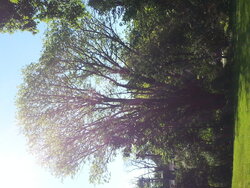I have a nice ash tree at the edge of my property facing the street. When I moved in it was being strangled by nasty climbing vines and crowded by other trees.
So I fixed the vine and brush issue and I thinned out some trees. My question, should I take out that maple on the left.
So I fixed the vine and brush issue and I thinned out some trees. My question, should I take out that maple on the left.





 .
.